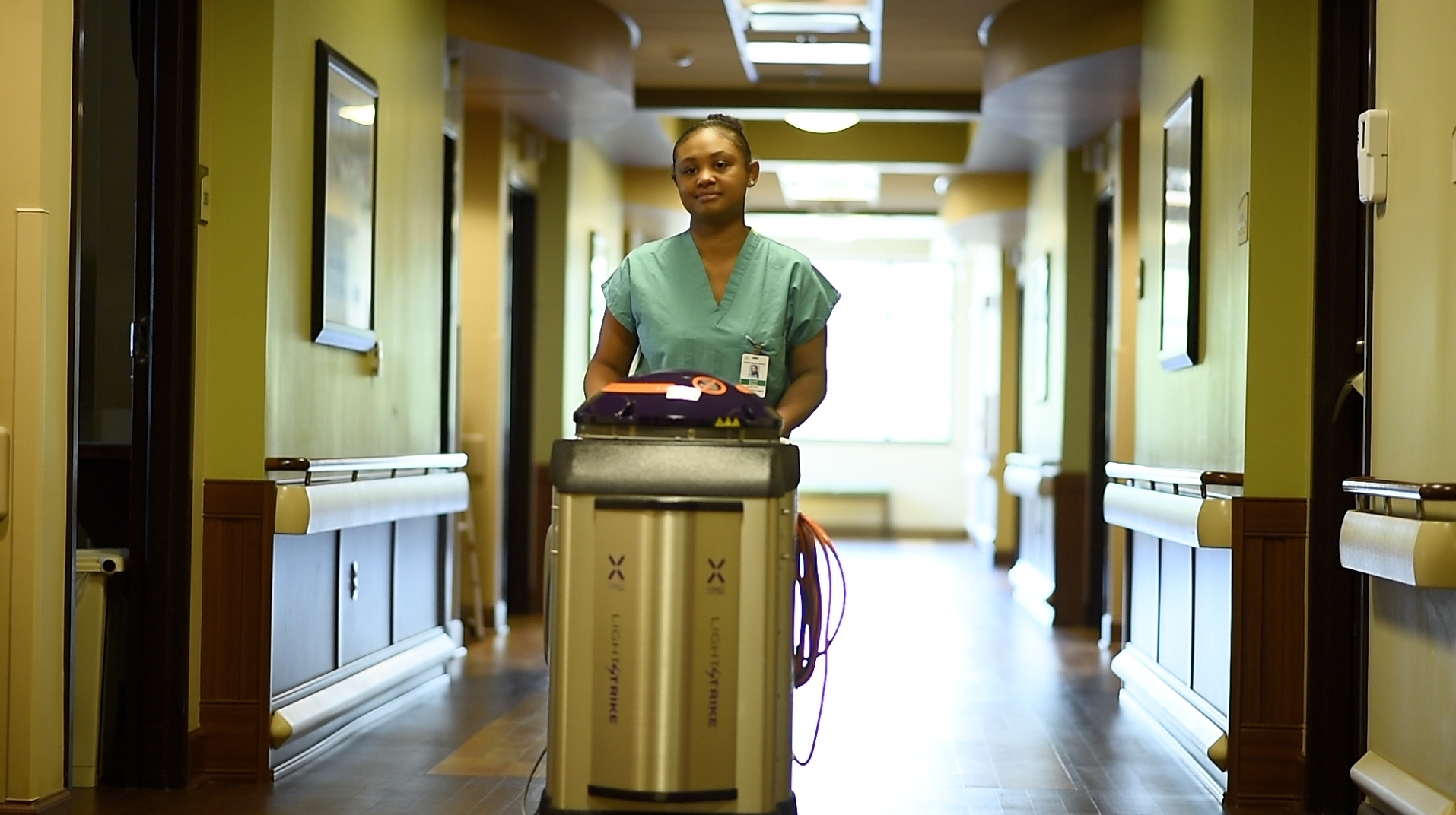By Warren Miller, contributing writer
Hospitals have found a new weapon against bacteria and infection in clinical settings, and it all comes with a little help from robots. Saint Peter’s University Hospital in New Brunswick, New Jersey, is using the Xenex LightStrike Germ-Zapping Robot to prevent hospital-acquired infections that have proven resistant to other forms of infection prevention. Impressively, the robot uses UV-C light to disinfect areas that are otherwise hard to sanitize and to kill germs that are hard to destroy by other means.
UV-C light has been used as a disinfection tool for some time, but the new Xenex robot utilizes new technology to emit pulsed xenon, an extremely high-intensity UV-C light that can penetrate the cell walls of bacteria, viruses, and other microorganisms. After a hospital room is cleaned and sanitized and the staff has left the room, the robot is wheeled in and allowed to work for 10 minutes. “It’s a cool device — it looks like R2-D2 from Star Wars or the robot from Lost in Space,” Perry Zycband, SPUH’s manager of environmental services, told My Central Jersey.

Image source: Xenex Disinfection Services.
The UV-C light waves are effective against even the most dangerous infectious agents, including ebola, influenza, and MRSA, to name a few. Studies published in peer-reviewed journals have found that hospitals using the germ-zapping robot have decreased their infection rates by as much as 70%. More than 400 hospitals and other healthcare facilities are using Xenex robots worldwide.
Complex mechanical helpers are used increasingly in hospitals but are typically thought of as tools used by surgeons or doctors to augment their human capabilities. Technological advancements for CAT scans for detecting and locating cancers and other diseases, micromanipulators for assisting with delicate procedures, and even 3D printing of skin and bone replacements have all progressed astonishingly quickly. This new breed of robots that actually move from room to room and assist with common hospital tasks seem to be in a different class. Robots of this type may evolve into more of a generalist, helping out in a variety of common tasks. Robots might even be able to interact with patients more frequently and maybe even more effectively than their human counterparts. If these robots become pervasive and can easily share data on how patients are reacting, they could dramatically improve the patient experience. With this type of robotic hospital assistant, engineers might have to rethink their perception of robots as harbingers of a looming post-apocalyptic future. Instead, maybe our robot overlords will be benevolent caretakers of humanity.
Advertisement
Learn more about Electronic Products Magazine





